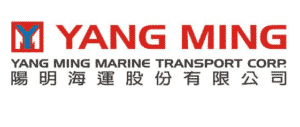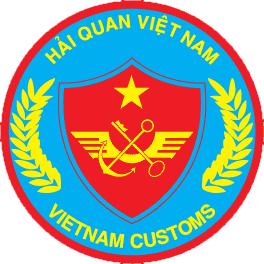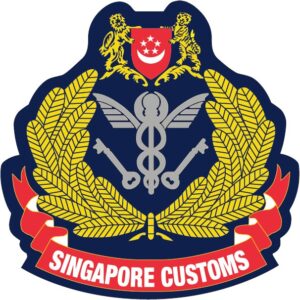Freight Shipping between Vietnam and Singapore | Rates – Transit Times – Duties & Taxes
Do you need detailed information on shipping between Vietnam and Singapore? You’re attracted to the Vietnamese market, but how can you enter it most effectively? Online access to this kind of information is difficult.
This article covers all aspect of the goods trade between Vietnam and Singapore. You can learn about the various modes of freight, the customs clearance of Vietnamese goods in Singapore, and the bilateral economic connections.
Freight Shipping between Vietnam and Singapore
Are you planning to ship goods between Vietnam and Singapore but feeling overwhelmed by the complex logistics and customs procedures involved? Worry not, because DocShipper is here to make your shipping experience smooth and hassle-free.
With our comprehensivee knowledge of import-export regulations, taxes, and transportation modes, we can guide you through the entire process and ensure that your goods reach their destination safely and on time. In this blog post, we’ll take a closer look at the key considerations when shipping between Vietnam and Singapore, including customs procedures, legal restrictions, and logistics options.
Whether you’re a business owner looking to expand your operations or an individual shipping personal goods, we’ve got you covered.
Docshipper Note:
Need assistance with your shipment? Dont hesitate to contact us even for a simple question. Choose the option that suits you
Live chat with an expert Chat us on WhatsApp Fill the formWhether you’re a large company, a small business, a start-up or an individual, DocShipper can arrange your shipment from start to finish, without you having to do anything. Tell us about your needs, so our experts can find the most appropriate solution for your freight and give you tips on how to save on shipping costs.

Sea freight between Vietnam and Singapore
The cost of shipping cargo between Vietnam and Singapore depends on several factors such as the distance between the two countries, the type of cargo, the size of the cargo, freight rates, fuel costs, port handling fees and applicable taxes.
Sea freight rates are often based on the volume or weight of the cargo, according to which the higher rate is applied. Transportation costs may also vary depending on the desired speed of delivery, the type of transportation service (for example, full container or LCL) and additional service options.
In general, the cost of shipping freight between Vietnam and Singapore can vary between US$100 and US$500 per 20-foot container, depending on the factors mentioned above. However, it is recommended to contact shipping companies or freight forwarders directly to obtain a precise quote according to your specific needs.
Commercial trade between the two countries
Trade between Vietnam and Singapore has grown in recent years. Singapore is one of Vietnam’s main trading partners in the ASEAN (Association of Southeast Asian Nations) region. According to data from Singapore’s Ministry of Trade and Industry, Vietnam’s trade with Singapore totaled US$26.1 billion in 2022. Vietnamese exports to Singapore totaled US$10.3 billion, while Vietnamese imports from Singapore reached US$15.8 billion. It should be noted that these figures are subject to revision and may be adjusted in the future based on subsequent economic and trade data.
Vietnam and Singapore have signed a number of trade agreements to strengthen their economic partnership, including the ASEAN-Singapore Free Trade Agreement, the Vietnam-EU Free Trade Agreement, the Comprehensive Regional Economic Partnership Agreement (RCEP), which is a free trade agreement between ASEAN and five other countries in the region, including Singapore. These agreements have facilitated trade and investment between the two countries.
Shipping companies operating between Vietnam and Belgium
Vietnam’s main seaports
Vietnam has several important seaports along its coastline, including:
- Hai Phong Port – located in northern Vietnam, is the second largest port in the country.
- Da Nang Port – located in central Vietnam, is the third largest port in the country.
- Ho Chi Minh City Port (formerly Saigon) – located in southern Vietnam, is the largest port in the country and the largest deep-water port in the Mekong Delta.
- The port of Vung Tau – located near Ho Chi Minh City, is mainly used for the export of petroleum products
- Quy Nhon Port – located in Binh Dinh Province, is one of the main ports in central Vietnam.
- Nha Trang Port – located in Khanh Hoa Province, is an important port for tourism and merchandise transportation
- The port of Cam Ranh – also located in Khanh Hoa province, is a deep-water port that is becoming increasingly important for freight transportation.
The main seaport of Singapore
- Port of Singapore: The Port of Singapore is the largest port in the city and one of the most active ports in the world. It is located at the mouth of the Singapore River and covers an area of more than 600 km².
- Port of Tuas: Located on the west coast of Singapore, the Port of Tuas is the second largest port in Singapore and specializes in bulk cargo, container and petroleum products.
- Port of Jurong: The Port of Jurong is located in the southwestern part of Singapore and is primarily used for bulk cargo and petroleum products.
- Port of Keppel: The Port of Keppel is located on the south coast of Singapore and focuses primarily on shipbuilding, ship repair and ship conversion.
- Pasir Panjang Port: The Pasir Panjang Port is located in southern Singapore and is primarily used for containers and petroleum products.
- Sembawang Port: Sembawang Port is located in northern Singapore and is primarily used for shipbuilding and ship repair.
These six ports are Singapore’s main seaports, but there are also other small ports and terminals throughout Singapore.
There are various sorts of containers, but the three most prevalent sizes are:
Do I have to ship my goods in LCL or full container between Vietnam and Singapore?
The choice between bulk or full container shipping depends on several factors, including:
Quantity of goods to be shipped: If you have a relatively small quantity of goods, bundling can be more cost-effective as you share shipping costs with other shippers.
Type of goods: If you have fragile or high-value goods, choose a full container to minimize the risk of damage or theft.
Delivery times: If you have tight deadlines for delivering your goods, shipping in a full container can be faster and more reliable because you don’t have to wait for other shippers to fill the container.
Cost: The cost of shipping will depend on a variety of factors, including the size and weight of the goods, the mode of transportation and transit time. In general, bulk shipping is cheaper than full container shipping, but this will depend on your specific situation.
In the end, the decision between bulk or full container shipping will depend on your specific situation. It may be wise to talk to a freight forwarder or logistics expert to evaluate your options and determine the best solution for your business.
There is now two methods of transportation :
LCL: Less than Container Load
LCL shipping is an appropriate choice if your goods do not fill the entire container. This is the ideal solution for small shipments, as you only pay for the space you use. Your merchandise will be placed next to that of another seller moving in the same direction.
FCL: Full Container Load
This means that, to reduce risks and costs, a customer uses the entire space of the carrier from the point of departure to the point of delivery to the consumer.
This is the best mode of transportation if you want to buy a lot of products.
For a larger quantity, the FCL will be safer and cheaper, even if you only fill part of it. Indeed, a complete container can be cheaper than the LCL from 15 m3.
Advantages of LCL
To put it simply, shipping through LCL will be the cheapest choice if they weigh between 2 CBM and 12/15 CBM (cubic meters). You’ll spend less on packaging and sorting.
Unlike aircraft, which has several limitations, the LCL is capable of transporting any type of cargo.
Disadvantages of LCL
The cost of packing, loading and unloading an FCL will be prohibitive (over 13 CBM).
Advantages of FCL
There is less handling, which increases your sense of safety and reduces the possibility of product damage (loading, temporary storage and unloading).
You must monitor the packaging of your items (palletizing is not necessary). The safety of your items is your responsibility.
It is the most affordable mode of transport, with a capacity of more than 16 MH.
Disadvantages of FCL
With a minimum of 15 CBM, it is used to transport large quantities of products.
It is the slowest mode of transportation.
Reefer container
Transit time between Singapore and Vietnam ports
-Transit period is 7-8 days between Ho Chi Minh Port and Singapore Port
-Transit time by sea between the port of Ho Chi Minh and the port of Tanjung Pelepas is approximately 3-5 days
-Transit time between Ho Chi Minh port and Tuas port is approximately 3-5 days.
-Transit time between Ho Chi Monh port and jurong port is approximately 4-7 days.
-Transit time between Ho Chi Minh port and Keppel port is approximately 4-7 days.
-Transit time between Ho Chi Minh port and Pasir Panjang port is approximately 3-5 days.
-Transit time between Ho Chi Minh port and Sembawang port is approximately 5-7 days.
Roro/Bulk/OOG/Refrigerated
Roro/Bulk/OOG/Refrigerated container from Vietnam to Australia
RORO:
A Ro-Ro is a ship used to transport, among other things, vehicles, loaded through one or more ramps. They are also known as Ro-Ro, from the English roll-on/roll-off meaning literally “roll-in, roll-out”, to distinguish them from the usual cargo ships where products are loaded vertically by cranes.
BULK:
Bulk goods are products transported directly into the ship’s hold or into the facilities provided for that purpose. A distinction is made in this case between bulk and general cargo. A distinction is made between bulk goods and general cargo: solid bulk goods: ( such as coal, ferrous and non-ferrous ores) bulk liquids: (oil and oil products). Bulk goods are transported by bulk carriers, ships specialised for each type of cargo: ore carriers, coal carriers, etc.)
OOG :
OOG (Out of Gauge) cargoes are a special category of goods. Because of, for example, dimensions or weight, some goods cannot be loaded in traditional containers. These types of cargoes are usually loaded onto a platform or trailer for transportation.
Refrigerated container :
We promise to transport goods at a specific temperature; when items are transported in a refrigerator, the temperature is monitored to keep perishable and/or chemically derived goods fresh during the trip.
This kind of container, which comes in different sizes, allows us to control the temperature and atmosphere.
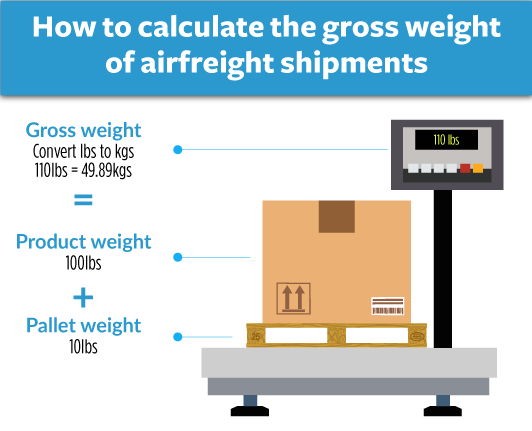
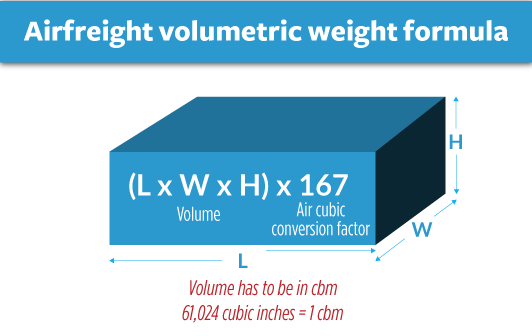
Air freight between Vietnam and Singapore
There are air cargo options between Vietnam and Singapore. Both countries have well-equipped international airports that serve cargo airlines.
To find cargo airlines, it may be useful to contact an air cargo broker who can help you find the best cargo options for your specific needs. They can also help you with the documentation and customs formalities necessary for the export and import of goods between Vietnam and Singapore.
The air freight companies
Some of the cargo airlines operating between Vietnam and Singapore are Vietnam Airlines Cargo, Singapore Airlines Cargo, Cathay Pacific Cargo, Korean Air Cargo, and Emirates SkyCargo. Freight rates may vary depending on the size, weight and nature of the goods shipped, as well as the time of year and demand.
It is important to plan ahead and ensure all necessary documentation is in place prior to shipping to avoid potential delays or issues.
Cost of air freight transport between Malaysia and Singapore
The cost of transporting air cargo between Malaysia and Vietnam may vary depending on various factors such as the distance between the two countries, the weight and dimensions of the cargo, seasonality, fuel charges and applicable taxes.
In general, airlines and freight forwarders offer fares based on the volumetric or actual weight of the cargo, according to which the higher fare is applied. Shipping costs may also vary depending on the speed of delivery desired.
On average, the cost of transporting air cargo between Malaysia and Vietnam can vary between US$2 and US$5 per kilogram, depending on the conditions of transport. However, it is recommended to contact air carriers or freight forwarders directly to obtain an accurate quote based on your specific needs.
How much does air freight transport between China and Indonesia cost?
What are the benefits of air cargo
Air cargo has several advantages over other modes of freight transport. Here are some of the most important advantages:
Speed: Air cargo is one of the fastest ways to transport goods over long distances. Aircraft can travel thousands of kilometres in a matter of hours, allowing businesses to deliver their products faster to their customers.
Reliability: Airlines have regular and reliable flight schedules, allowing companies to accurately plan their deliveries. In addition, aircraft are less prone to weather disturbances than other modes of transportation, such as boats or trucks.
Safety: Air cargo is considered one of the safest ways to transport goods, as aircraft are equipped with advanced technologies to prevent accidents.
Flexibility: Airlines can transport a wide range of goods, from fresh food to high-tech products, including medicines and perishable products. Aircraft can also land in remote and hard-to-reach locations, allowing businesses to deliver goods where other modes of transportation cannot.
Profitability: Although air freight is generally more expensive than other modes of transport, it can be more profitable for businesses that have valuable products or have to deliver products quickly. In addition, costs can be reduced through efficient packaging and consolidation techniques.
In short, air cargo is a very useful mode of transportation for businesses that need to deliver goods quickly, safely and reliably, and have valuable products or special transportation requirements.
Express Freight
Express air cargo between Vietnam and Singapore is a popular way to move goods quickly and efficiently between the two countries. Singapore is a major transit centre for air cargo in Asia, and many airlines offer cargo services between Singapore and Vietnam.
Vietnam has become a major manufacturing and export hub in the region, and air cargo is often used to transport electronics, food, textiles and other perishable or high value-added goods. The main cargo airports in Vietnam are Tan Son Nhat International Airport in Ho Chi Minh City and Noi Bai International Airport in Hanoi.
The main airlines offering express cargo services between Vietnam and Singapore include Singapore Airlines Cargo, Vietnam Airlines Cargo and Jetstar Pacific. These airlines offer express freight services for businesses that need to move goods quickly and efficiently.
Air express freight rates between Vietnam and Singapore depend on the weight and size of the cargo, as well as the distance traveled. Companies can generally obtain quotes from airlines to determine the exact cost of shipping their goods.
In summary, express air cargo between Vietnam and Singapore is a fast and efficient way to transport goods between the two countries, thanks to the presence of many air carriers and the importance of Singapore as a transit centre for air cargo in Asia.
Main airports in Vietnam
Vietnam has several international and domestic airports. The main airports are:
- Tan Son Nhat International Airport in Ho Chi Minh City
- Noi Bai International Airport in Hanoi
- Da Nang International Airport in Da Nang
- Cam Ranh International Airport in Nha Trang
- Phu Quoc International Airport to Phu Quoc
- Can Tho International Airport to Can Tho
- Cat Bi International Airport in Hai Phong
- Vinh International Airport in Vinh
- Lien Khuong International Airport in Da Lat
- Chu Lai International Airport in Quang Nam.
It should be noted that Vietnam also has many regional and local airports serving various cities and regions of the country.
The main airlines offering express cargo services between Vietnam and Singapore include Singapore Airlines Cargo, Vietnam Airlines Cargo and Jetstar Pacific. These airlines offer express freight services for businesses that need to move goods quickly and efficiently.
Air express freight rates between Vietnam and Singapore depend on the weight and size of the cargo, as well as the distance traveled. Companies can generally obtain quotes from airlines to determine the exact cost of shipping their goods.
In summary, express air cargo between Vietnam and Singapore is a fast and efficient way to transport goods between the two countries, thanks to the presence of many air carriers and the importance of Singapore as a transit centre for air cargo in Asia.
Main airports in Singapore
Singapore has a main airport and a regional airport. Singapore’s main airports are:
- Changi International Airport – This is Singapore’s main airport, located about 20 kilometres east of the city centre. It is considered one of the best airports in the world in terms of quality of service, efficiency and convenience.
- Seletar Airport – This is a regional airport located in the north of Singapore. It is mainly used for regional and private flights.
These two airports are the main ones in Singapore, but there are also other smaller airports in the country, such as Pulau Ubin airport for private flights and Paya Lebar airport for military and government operations.
Transit time between Vietnam and Singapore airports
The transit time between Vietnam and Singapore airports depends on the airline and the route taken. In general, the direct flight time between Ho Chi Minh City, Vietnam’s largest city, and Singapore is about 2 hours.
However, if you are travelling with a stopover in another city, the transit time can vary considerably depending on the length of the stopover and the distance between airports. It is therefore important to check your flight details with your airline before booking.
For air cargo, transit time will also depend on many factors, such as flight availability, customs processing wait times and delivery. It is important to check with your airline for specific details of your particular shipment. Transit times may vary depending on the size, weight and type of cargo, as well as specific customs requirements for shipments between Vietnam and Singapore. It is therefore recommended that you plan ahead and work closely with your air cargo provider to ensure your shipment arrives on time

Door-to-door shipping from Vietnam to Singapore
Want the best peace of mind? Take the door-to-door service. Therefore, we take care of the whole process. We will pick up your shipments in Vietnam (with Packing/ Loading if necessary) and make the delivery in Australia (with Unloading/ Unpacking if necessary).
This comfort provided is really appreciated by our customers. Also, note that we are responsible for each phase of the transfer.
How are door-to-door services useful?
From A to Z ensures the fluidity of your transfer. Indeed, our employees in Vietnam and Australia will cooperate to avoid any delays or additional costs due to communication errors between all entities responsible for your freight. Thus, for example, customs clearance will be entirely under control, thanks to the competence of our collaborators with customs of Singapore and Vietnam.

Customs clearance in Singapore of goods imported from Vietnam
How much will I pay?
The amount you must pay for customs clearance of goods imported from Vietnam to Singapore depends on several factors, including:
- The value of your imported goods: The amount of duties and taxes payable will depend on the value of the imported goods. This includes transportation, insurance and transportation costs.
- The nature of your goods: Certain types of goods may be subject to additional import duties, special taxes or restrictions.
- The place of origin of your goods: Singapore has signed free trade agreements with certain countries, which can lead to a reduction in customs duties for goods imported from these countries.
- Mode of transportation: The cost of customs clearance may vary depending on the mode of transportation used, for example by air, sea or road.
Calculate applicable tariff with the HS code
To calculate customs duties for a product using the HS (Harmonized System) code, you must follow these steps:
- Find the appropriate HS code for your product using your country’s online tariff database. The HS code is a series of numbers that identifies the product in question.
- Use the HS code to determine the import duty rate applicable to your product. Import duty rates vary depending on the country of origin of the good and the country of destination, as well as the nature of the product.
- Determine the value for duty of your product using the purchase price, transportation and insurance charges, and associated costs. This is the amount on which the customs duties will be applied.
- Multiply the value for duty of your product by the applicable import rate to obtain the amount of customs duty. For example, if the import duty rate for your product is 10% and the value for duty of your product is $1,000, the duty payable will be $100 (10% of $1,000). It is important to note that tariffs are only a portion of the cost of importing goods. There may also be value-added taxes, brokerage fees, customs clearance fees and storage fees to be considered. It is therefore recommended to contact a customs broker or freight forwarder to obtain a complete estimate of the costs associated with importing your products.
Customs clearance process in Singapore
The customs clearance process in Singapore may vary depending on the type of commodity, the mode of transport and the complexity of the transaction. However, in general, the Singapore clearance process includes the following steps:
- Preparation of documents: Before the goods arrive, the declarant must prepare the necessary documents, such as the commercial invoice, bill of lading, certificate of origin, import permit, etc.
- Arrival of goods: Goods arrive in Singapore by sea, air or land and are unloaded at the port or airport
- Customs declaration: The declarant must complete a customs declaration, which includes information on the goods, their value, origin and destination.Payment of duties and taxes: Customs duties, consumption taxes and other charges must be paid before the goods can be released.
- Inspection and evaluation of goods: Customs authorities may conduct a physical or documentary inspection of goods to verify compliance with customs regulations.
- Clearance Authorization: If the good is found to be in compliance, the customs authorities issue a clearance authorization, which allows the good to be unloaded and delivered to its destination.
- Goods delivery: Goods can be delivered by truck, rail or boat to their final destination. It is important to note that customs regulations in Singapore can be complex, so it is recommended that you use a customs broker or freight forwarder to help you navigate customs procedures and assist you
How to calculate the applicable tariff with HS code?
What are the Licenses required (import & export)
Certificate of Origin :
The nation of origin of the items transported is verified by the certificate of origin. This document, necessary for international trade, contains information on the country of manufacture, which should not be confused with the country of origin of the goods.
Original Invoice :
Whether you are travelling to Malaysia or Vietnam, you must have the original invoice to liquidate your purchases. Ensure the quantity on the packing list matches the amount on the original invoice.
Bill of Lading :
The bill of lading, which is a document used to prove that the exporter has transported the specified items, is used to document this delivery. The bill of lading is another legal document to consider. In addition, it provides all the necessary data to properly process and bill freight.
Health certificate :
The health certificate is a document which certifies, after examination by the competent authorities, that the articles meet the criteria specified by law in terms of cleanliness of production, microbiological standards for foodstuffs and animal health.
Packing List :
For each link in the supply chain, shippers create a “packing list” document. This official document, which provides all the product(s) and packaging information that is included in each shipment, must be sent with each air and sea cargo shipment.
Declaration of Imported Goods Form :
An official document called an import declaration is a document in which you disclose information about the importation of services
Contact Vietnamese customs
Official name: General Department of Vietnamese Customs
Website: Vietnamese Customs
Contact singaporean customs
Official name: General Department Of Singaporean Customs
Website: Singapore Customs
Other logistics services
Warehousing and storage
We offer comprehensive warehousing services in China, with multiple distribution centers located in key urban areas to ensure efficient and timely delivery of your merchandise to Thailand. Our experienced team is equipped to handle complex logistics needs, including consolidation of orders from multiple suppliers or splitting of containers for later shipment. You can trust us to ensure the safe and secure storage of your goods with our advanced inventory management systems and strict security protocols. For more information on our warehousing services, please refer to our dedicated article : Warehousing services
Packaging and repackaging
Calculating the assurance for transportation involves multiplying the premium rate by the pronounced sum. The cost of insurance can vary based on several factors, including the mode of transportation, the nature of the cargo, and the insurance company. To accurately determine the cost, it is essential to declare both the shipping charges and the value of the goods. For further information on transportation insurance, we invite you to consult our dedicated article : Packing services

Transport insurance
The measure of assurance for transport is determined with premium rate x pronounced sum. The protection rate changes as indicated by the strategy for transportation utilized, the sort of merchandise and the insurance agency... In order to be aware of the exact amount, the supporter has to proclaim the measure of costs that is related to the transportation just as the worth of the merchandise. Check our dedicate article : Transport insurance
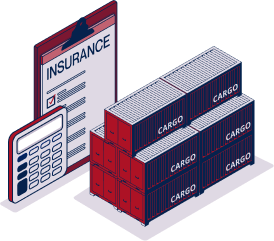
Supplier management in China
We take a proactive approach to ensure seamless operations and customer satisfaction. As such, we initiate contact with your supplier well in advance to provide a comprehensive service that guarantees the quality of the products you receive. Our team is proficient in evaluating product attributes such as CE standards, product condition, and packaging, and will ensure that the products are packaged appropriately before being dispatched under our close supervision. With our commitment to exceptional service, we guarantee a hassle-free experience from start to finish. Our team, which is fluent in Mandarin, English, and French, has the necessary expertise to verify crucial details such as accurate measurement and proper HS code classification of your goods. More information can be found on our dedicated page: Sourcing service
Shipment of personal effects
Are you in the midst of planning a relocation, or have you recently returned from a trip that has left you with a surplus of luggage to manage? Do you find yourself grappling with the complexities of packing, storage, packaging, or customs clearance? Let us alleviate the burden of packing, storage, packaging, and customs clearance for your upcoming move or unexpected return from a busy trip. We offer comprehensive solutions for transporting your belongings from China to Europe, or any other destination around the globe. Rest assured, we take ownership of the logistics and handle everything with care and attention to detail. More informations on our dedicated page : Moving services
FAQ | Freight from Vietnam to Singapore : the complete guide
The most efficient means of transit between sea and air cargo depends on the specific needs and requirements of the shipment. If the cargo is time-sensitive and requires rapid delivery, air freight may be the best option as it offers faster transit times.
However, if the cargo is heavy and/or voluminous, sea freight may be a more cost-effective option as it offers greater capacity and lower rates. Also, multimodal transportation solutions, such as sea-air or air-sea, may be the most efficient option for certain shipments as they combine the advantages of both sea and air freight while minimizing their respective drawbacks. Ultimately, the optimal transit mode will depend on factors such as the nature of the cargo, the required delivery time, and the budget of the shipper.
To get a price for your cargo shipment between Vietnam and Singapore, there are several steps you can take.
First, you can research and identify reputable logistics providers that operate in both countries and specialize in the specific type of cargo you wish to transport.
Next, you can provide the logistics providers with detailed information about your cargo, including its weight, dimensions, and type, as well as the origin and destination points, and any special handling requirements.
Based on this information, the logistics providers can provide you with a quote for the shipment, which should include all relevant fees and charges, such as freight charges, customs fees, and insurance.
The initial stage of product delivery between Vietnam and Singapore typically involves the preparation and documentation of the shipment. This includes ensuring that the products are properly packaged and labeled, and that all necessary customs documents and permits are obtained. The shipper must also arrange for transportation to the departure port or airport, which may involve coordination with a freight forwarder or other logistics provider.
Once the shipment is ready, it will be transported by sea or air to the destination port or airport in Singapore, where it will undergo customs clearance and inspection before being released for delivery to the final destination. During this stage, it is important for the shipper to closely monitor the shipment's progress and communicate with the logistics provider to ensure that any issues or delays are addressed promptly.
By carefully managing the initial stage of product delivery, shippers can help to ensure a smooth and successful shipment that meets their customers' needs and expectations.
Yes, you will generally need a license to import goods from Vietnam into Singapore, depending on the type of goods you are importing. Singapore has a complex regulatory framework for imports, and the specific regulations and requirements will vary depending on the type of goods being imported. To determine the specific licenses and permits required for your goods, you should first check the Singapore Customs website, which provides detailed information on import requirements and regulations.
You may also need to consult with a customs broker or freight forwarder who can advise you on the specific requirements and procedures for your imports. In addition to licenses and permits, you may also need to comply with other regulations, such as product labeling and safety standards. Again, the specific requirements will depend on the type of goods being imported, so it's important to do your research and ensure that you are in compliance with all relevant regulations before you begin importing from Vietnam into Singapore.


